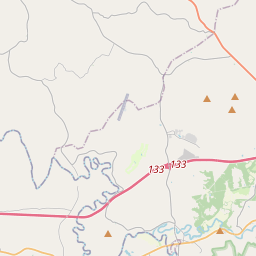Morgan Raiders' Camp







On last tragic raid, the fourth into Kentucky, Morgan's Raiders took Mt. Sterling, then lost it, took Lexington and June 11, 1864 took Cynthiana. Next day USA men under Brig. General S. G. Burbridge dispersed raiders. Morgan then retreated through Flemingsburg and camped here June 12. He and his men returned to Virginia, but never recovered from this reverse.
Marker cast in 1962
April 12, 1861: The Civil War begins with the Confederate attack on Fort Sumter, located in South Carolina's Charleston Harbor.
April 15, 1861: President Abraham Lincoln issues a call for 75,000 volunteers to serve in the Union Army to suppress the rebellion.
May 24, 1861: The first major land battle, known as the First Battle of Bull Run (or First Battle of Manassas), takes place in Virginia. It ends in Confederate victory.
September 17, 1862: The Battle of Antietam in Maryland becomes the bloodiest single-day battle in American history, with heavy casualties on both sides. The Union forces, commanded by General George McClellan, manage to halt Confederate General Robert E. Lee's advance into Union territory.
January 1, 1863: President Lincoln issues the Emancipation Proclamation, declaring that all slaves in Confederate-held territories are to be set free. However, the proclamation does not immediately free all slaves in the United States.
July 1-3, 1863: The Battle of Gettysburg in Pennsylvania takes place, resulting in a significant Union victory and inflicting heavy casualties on Confederate forces. It marks a turning point in the war.
November 19, 1863: President Lincoln delivers the Gettysburg Address, emphasizing the principles of liberty, equality, and the preservation of the Union.
April 9, 1865: General Robert E. Lee surrenders to Union General Ulysses S. Grant at Appomattox Court House in Virginia, effectively ending the Civil War.
April 14, 1865: President Lincoln is assassinated by John Wilkes Booth while attending a play at Ford's Theatre in Washington, D.C.
May 10, 1865: Confederate President Jefferson Davis is captured, signaling the collapse of the Confederate government.
December 6, 1865: The Thirteenth Amendment to the United States Constitution is ratified, officially abolishing slavery throughout the country.
While this timeline provides an overview of key events, it is important to note that the Civil War spanned over four years, from 1861 to 1865, and encompassed numerous battles, campaigns, and political developments that shaped the course of American history.
Kentucky is known as the "Bluegrass State" because of the bluegrass that grows in many of its pastures.
The first European settlers arrived in the late 18th century, with many of them being of Scottish and Irish descent. The county quickly grew as more pioneers settled in the region, taking advantage of the fertile land for farming and the abundant natural resources. In the early 19th century, Rowan County became an important center for agriculture, with tobacco being the primary cash crop.
The county played a significant role in the Civil War, with many residents supporting the Confederacy and joining Confederate military units. However, there were also Union sympathizers in the area, which led to a divided community. The conflict caused devastation and hardship, with widespread destruction of property and loss of life. After the war, Rowan County slowly rebuilt, focusing on agriculture and the timber industry.
In the 20th century, Rowan County experienced both economic growth and challenges. The discovery of oil and gas resources brought prosperity to the area, attracting companies to extract these resources. However, like many rural regions, the county also faced economic decline due to the changing landscape of the agricultural industry. Efforts have been made to diversify the economy and promote tourism in recent years, with outdoor activities such as hiking and fishing drawing visitors to Rowan County.
Rowan County Timeline
This timeline provides a concise overview of the key events in the history of Rowan County, Kentucky.
- 1793: Rowan County was formed from part of Fleming County.
- 1859: The county seat was established in Morehead.
- 1861-1865: Rowan County was deeply affected by the American Civil War.
- 1889: The first train arrived in Morehead, expanding transportation options.
- 1930s: The creation of Cave Run Lake increased recreational opportunities in the area.
- 1954: Morehead State University was established, bringing higher education to the county.
- 2015: Rowan County gained national attention for a legal battle over same-sex marriage licenses.